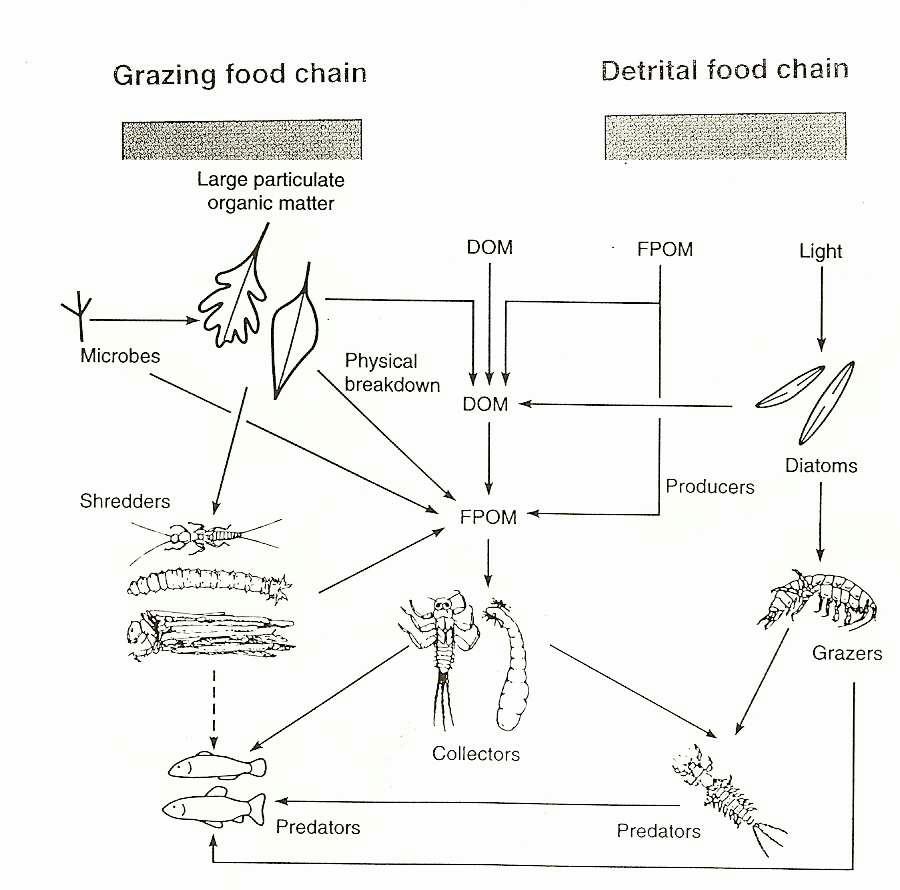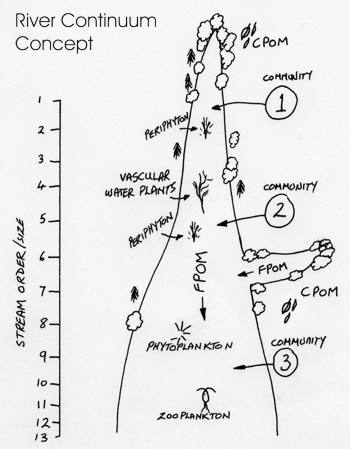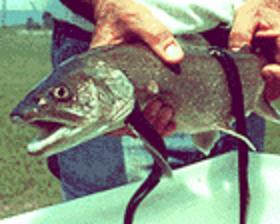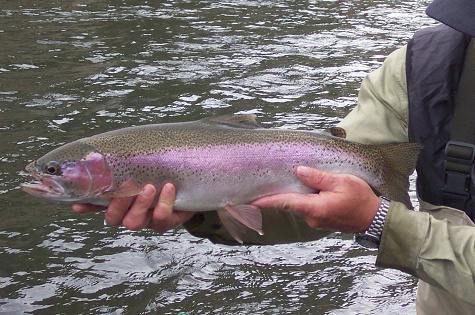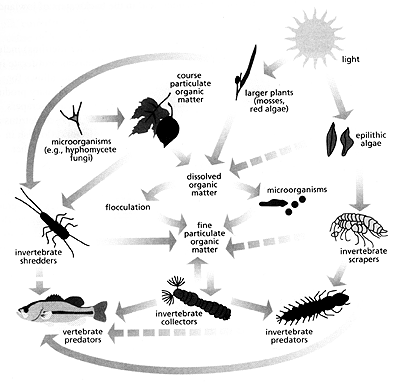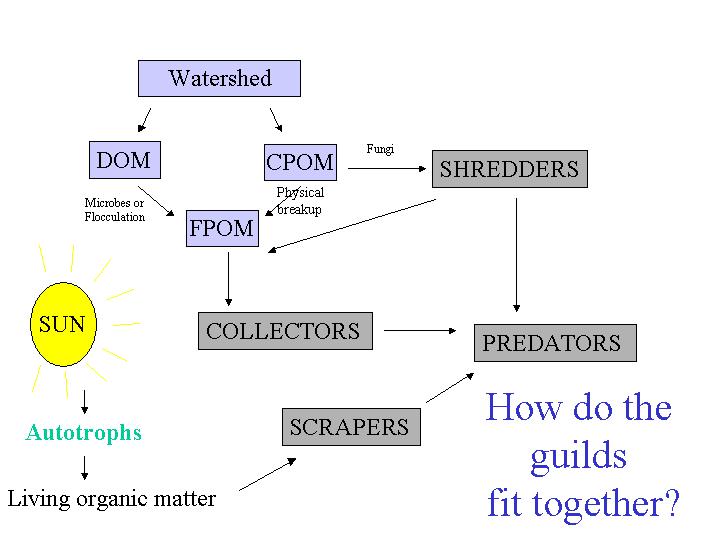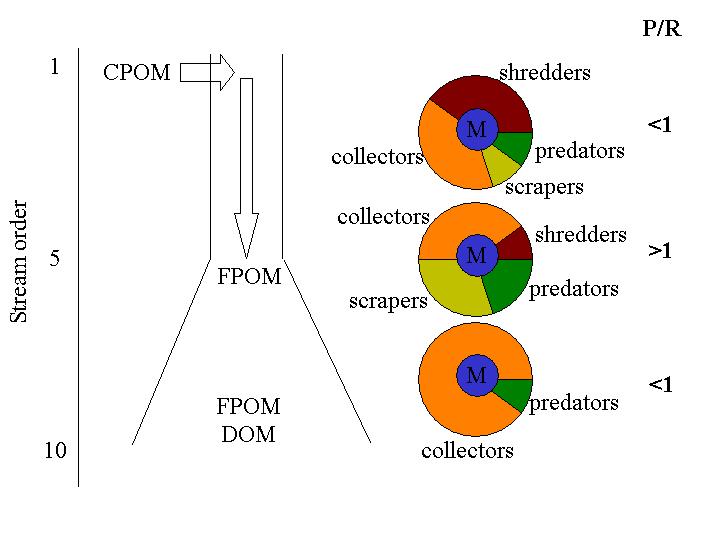 | Trofhic |
|
Qualitative web |
Quantitative web |
RCC - River Continuum Concept 1 - Shredders and Collectors, 2 - Collectors and Grazers, 3 - Collectors |
Sea lamprey |
Blue Gill |
trout |
|
Biological Community - http://www.d.umn.edu/~seawww/depth/rivers/07.html -gidrology |
How do the guilds fit together - http://www.esf.edu/efb/schulz/Limnology/Stream2006.html |
RCC |
I. Background
A.. Trophiic rellatiionshiips descriibe the ffllow
off energy through a system
Trophic position = The llocatiion of
the organiism wiithiin the food web
The long and shortt off ffood-chaiin llengtth
David M. Post
Conventiionall Wiisdom
_ Resource avaiillabiilliity
_ Dynamiicall stabiilliity
New Schooll
_ Communiity organiizatiion
_ Resource avaiillabiilliity
_ Predator-prey iinteractiions
_ Diisturbance
_ Ecosystem siize
The concept off a ffeediing guiilld
1. Distinguishes among feeding roles using
a. Types of food consumed
b. How food was obtained
2. If several species share a common food
resource & procure food in a similar
manner, then they are considered to be
in the same feeding guild
Why feeding
guilds?
1. Standard
trophic
categories for
marine &
terrestrial
systems
(Lindeman
1942) do not
provide much
information
Why feeding guilds?
2. Inverts often polyphagous rather than
monophagous --omnivores
3. Inverts--gut contents difficult to distinguish
4. Most fish eat inverts, so little difference if
consider only trophic levels
5. Lots of diet overlap
6. Microbial portion of food webs (detrital)
needs to be consideredimportance in
flowing water has been underestimated
Food sources, food webs &
energy transfergeneral concepts
Food source - Consumer
DOC - bacteria
Bacteria - Protozoans,
micrometazoans
CPOM - Various invertebrates
FPOM Various invertebrates,
some fish
Periphyton (algae) - Various invertebrates, some fish
Invertebrates Predatory - invertebrates, fish, parasites
Fish - Piscivorous fish, parasites
Food webs
1.. Liink consumers wiith resources ffor a
giiven communiity
2.. Can be based on trophiic structure or
ffeediing guiillds
3.. Can be qualliitatiive (shows jjust the
lliinks) or quantiitatiive (shows lliinks +
the amount off energy transfferred)
Energy flow
On average about 10% (?) of the energy
in one trophic level (or feeding guild) is
transferred to the next higher level
Much energy is lost as heat
Energy needed for growth, reproduction
& maintenance
Assimilationthe portion of the food
energy content consumed that is
actually metabolized (some passes right
through)
Stream trophic relations
A.. Miicrobiiall ffood webthe miicrobiiall lloop
1. Take DOM and FPOM & converts it into
bacterial biomass which is then used by
protozoans and then by invertebrates
2. Evidence for importance comes from
lakes
a. found too little productivity to support the
increases in algal biomass
b. important in oligotrophic lakes
Microbial loop in streams
a. Benthic bacteria more abundant & active than
suspended ones
b. Metazoan consumers of benthic bacteria &
protistscopepods, oligochaetes, rotifers,
nematodes
c. How much of the microbial loop is transferred to
macroinvertebrate assemblage?
i. If protists need to eat bacteria first, then consumers
eat protists, there will be too many transfers and not
much energy left
ii. Some bacteria are consumed directly (e.g.,
oliogochaetes)
The feeding role of invertebrate consumers in running water (see tab. 6.1 and PHOTOS BELOW - Invertebrate consumers).
C. Limitations of functional feeding
groups
1. Change in diet with age
2. Change in diet with food
availability
River continuum discussion
What do the authors mean by
ecosystem/community structure and
function?
How do the physicochemical features and
the morphological/behavioral features of
inverts and fish differ among headwaters
(order 1-3), medium size (4-6) and large
rivers (>6)? Also, how does gross primary
production differ among these?
River continuum discussion
We expect the particle size of organic
material to become progressively smaller as
we move downstream. How is this concept
affected by tributaries and anthropogenic
activities?
Page 135 discusses the spatial shift of
insects, mollusks and crustaceans. According
to this theory, where do we expect to see the
highest stream diversity? Where will diversity
be highest in 100,000 years?
D. River continuum
1.. Attempt to construct a synthetiic
fframework to descriibe the ffunctiion off
llotiic ecosystems ffrom source to mouth
2.. Physiicall characteriistiics change ffrom
headwaters to mouth
3.. Oriigiinall iidea ffor temperate woodlland
streams & tiied to stream order
River
continuum: generalized depiction of the relationship between stream size (order), energy imputs and sted under thr river continuul concept (from Vannote et al)/
From headwaters to mouth, the physical variables within a river system present a continuous
gradient of physical conditions. This gradient should elicit a series of responses within
the constituent populations resulting in a continuum of biotic adjustments and consistent
patterns of loading, transport, utilization, and storage of organic matter along the length of a
river. Based on the energy equilibrium theory of fluvial geomorphologists, we hypothesize that
the structural and functional characteristics of stream communities are adapted to conform
to the most probable position or mean state of the physical system. We reason that producer
and consumer communities characteristic of a given river reach become established in harinony
with the dynamic physical conditions of the channel. In natural stream systems, biological
communities can be characterized as forming a temporal continuum of synchronized species
replacements. This continuous replacement functions to distribute the utilization of energy
inputs over time. Thus, the biological system moves towards a balance between a tendency for
efficient use of energy inputs through resource partitioning (food, substrate, etc.) and an
opposing tendency for a uniform rate of energy processing throughout the year. We theorize
that biological communities developed in natural streams assume processing strategies involving
minimum energy loss. Downstream communities are fashioned to capitalize on upstream
processing inefficiencies. Both the upstream inefficiency (leakage) and the downstream adjustments
seem predictable. We propose that this River Continuum Concept provides a framework
for integrating predictable and observable biological features of lotic systems. Implications
of the concept in the areas of structure, function, and stability of riverine ecosystems are
discussed.
Key words: river continuum; stream ecosystems; ecosystem structure, function; resource
partitioning; ecosystem stability; community succession; river zonation; stream geomorpholou
VANNOTE, R. L.,G. W. MINSHALL, K. W. CUMMINS, J. R. SEDELL, AND C. E. CUSHING. 1980.
The river continuum concept. Can. J. Fish. Aquat. Sci. 37: 130-137.
It looks at energy inputs changing along the length of the river, considering the size of the channel, light penetrating the water, shading, etc. These are related to the feeding relationships of the communities. The concept predicts that where primary production is lowest the communities down stream of this will be based on detritus. But this is just one prediction and all predictions need to be related to the location. This is a generalised plan of the RCC:
D. River continuum
P:R ratio
5. Importance as a general organizing
principle
6. Why dont functional groups fit?
i. Anything that Resets the stream
1) Input of tributaries
2) Input of groundwater
E. Vertebrate consumers-fish
Fiish thought to be the most iimportant
2.. Probllems siimiillar to those off
iinvertebrates
3.. Number off attempts to construct
ffeediing guiillds ffor ffiish
E. Vertebrate consumers-fish
Trends iin temperate streams
a. Benthic invertebrate feeders most
numerous
b. Surface and water column feeders are
also numerous
c. Planktivores & large predators sparse
d. Downstream trends
i. Planktivores absent from headwater
ii. Piscivores increase downstream
E. Vertebrate consumers-fish
Trends iin tropiicall streams
a. Risky business, extensions are tentative
b. Allochthonous inputs greater in the
tropics because of extensive flood plains,
thus greater role for mud & detritus
feeders
c. Greater diversity of food resources (e.g.,
seeds, fruits, terrestrial vertebrates)
E. Vertebrate consumers-fish
Speciialliized adaptatiions
a. Visual pigments
i. Short-wave-shifted species had
visual pigments in the short wave
range, works in shallow areas, diurnal
feeding from surface in shallow water
ii. long-wave-shifted species had visual
pigments in the long wave range,
works in deep areas, nocturnal or
turbid water feeders (e.g., catfishes)
3. Specialized adaptations
b.. Body shape
i. Deep, flat bodies
associated with slower
water habitats (e.g.,
blue gill)
ii. Bullet shaped bodies
associated with faster
water habitats (e.g.,
trout)
3. Specialized adaptations
Gut morphollogy
i. Ventral mouthsmore food from bottom
ii. Terminal or anterior mouthsfood from
water column
F. Other vertebrate consumers
Allll hiigher vertebrates are represented
iin llotiic ffood webs
2.. Largest iimpact probablly ffrom ffiisheatiing
snakes,, biirds
3.. Sallamandercarniivore off
iinvertebrates,, other amphiibiians &
ffiish,, can get llarge (e..g..,, hellllbender)
F. Other vertebrate consumers
Biirdsffeed on ffiish & iinvertebrates
a. 11 orders (e.g., ducks, great blue heron)
b. In Panama armored catfish dont go into
the shallows because of birds; these fish
scrape algae & distribution of algae
inversely mirrors the distribution of fish
2.. Mammalls
a. Shrews, racoons, bears occasional
feeders
b. Otters fully aquatic
The best known longitudinal model for rivers, the River Continuum Concept (RCC), attempts to generalize and explain observed longitudinal changes in stream ecosystems (Figure 1.4). It proposes that rivers exhibit continuous longitudinal changes and identifies the relationships between the progressive changes in stream structure, such as channel size and stream flow, and the distribution of species (Table 1.1). According to the RCC, characteristics of particular reaches are associated not only with discrete factors such as water temperature, but with their positions along the length of the river. The model is especially useful at the basin and stream scale, because it accounts for observed longitudinal shifts in biotic communities.
Biological Community
The morphometric and physical properties of a stream determine the availability of suitable habitat for biota. The unidirectional flow of water is one of the most important factors controlling survival in rivers. River-adapted organisms must have strategies to protect themselves from being flushed downstream. Other factors that determine the suitability of habitat are flow regime, water quality, temperature, sunlight, oxygen, food, and protection from predators.
The organisms in an ecosystem are interconnected to form a food web. The food relationships commonly observed among stream biota are shown in Figure 1.8. In rivers, the primary producers that compose the base of the food web include aquatic plants (macrophytes) and algae. Some types of algae, known as periphyton, attach to surfaces in the stream channel, whereas others, known as phytoplankton, are suspended in the water. Primary producers use energy from sunlight to turn dissolved inorganic nutrients (nitrogen, phosphorus, carbon) into organic matter through photosynthesis. Organisms that feed on this plant tissue convert it to animal tissue, waste and energy. Decomposition of organic materials occurs as other organisms break down dead plant and animal tissue and wastes.
Original Lessons
The Feeding Role of Invertebrate Consumers
The River Continuum Concept
bentos
River Continuum Concept

